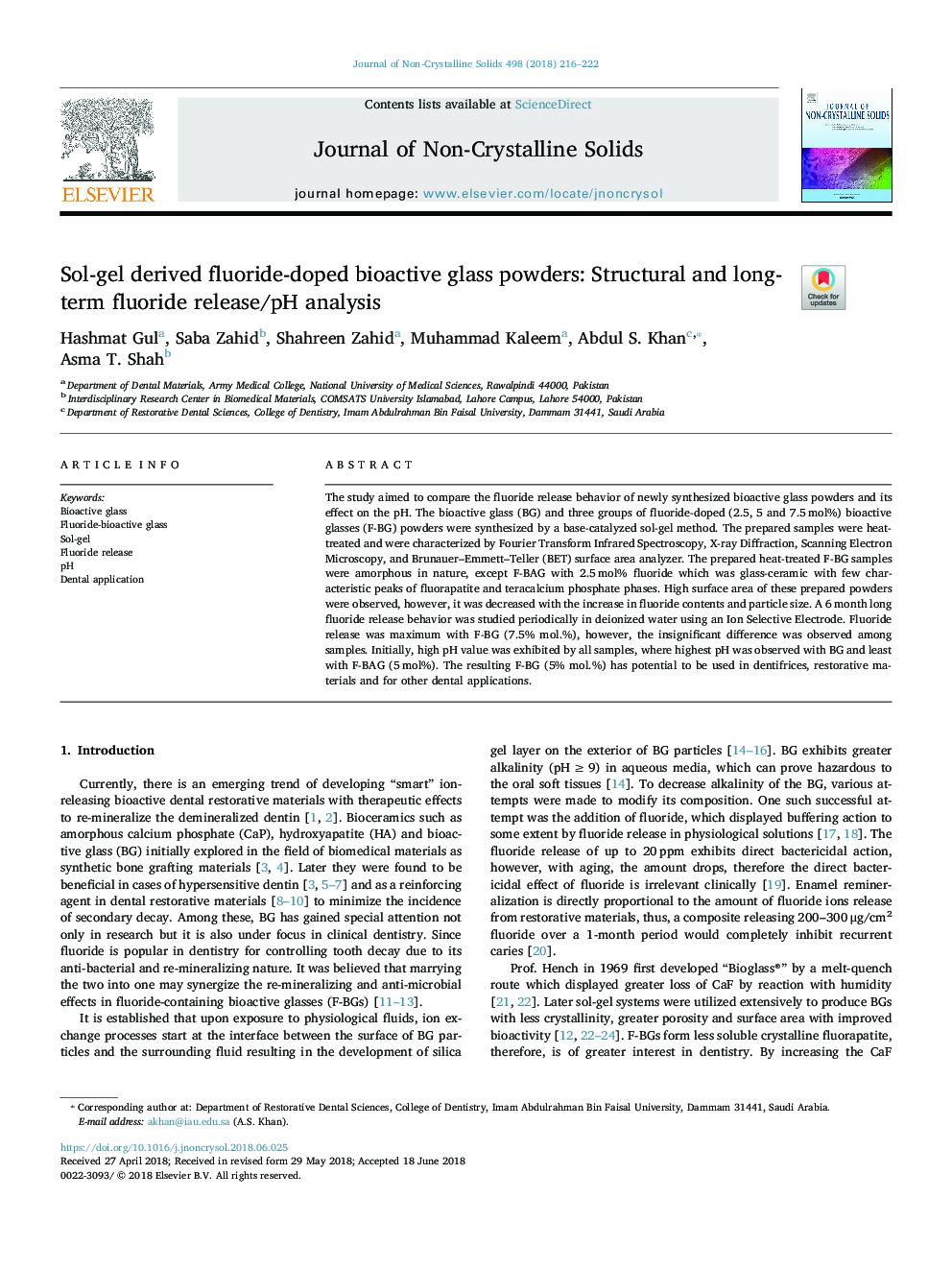| Article ID | Journal | Published Year | Pages | File Type |
|---|---|---|---|---|
| 7899667 | Journal of Non-Crystalline Solids | 2018 | 7 Pages |
Abstract
The study aimed to compare the fluoride release behavior of newly synthesized bioactive glass powders and its effect on the pH. The bioactive glass (BG) and three groups of fluoride-doped (2.5, 5 and 7.5â¯mol%) bioactive glasses (F-BG) powders were synthesized by a base-catalyzed sol-gel method. The prepared samples were heat-treated and were characterized by Fourier Transform Infrared Spectroscopy, X-ray Diffraction, Scanning Electron Microscopy, and Brunauer-Emmett-Teller (BET) surface area analyzer. The prepared heat-treated F-BG samples were amorphous in nature, except F-BAG with 2.5â¯mol% fluoride which was glass-ceramic with few characteristic peaks of fluorapatite and teracalcium phosphate phases. High surface area of these prepared powders were observed, however, it was decreased with the increase in fluoride contents and particle size. A 6â¯month long fluoride release behavior was studied periodically in deionized water using an Ion Selective Electrode. Fluoride release was maximum with F-BG (7.5% mol.%), however, the insignificant difference was observed among samples. Initially, high pH value was exhibited by all samples, where highest pH was observed with BG and least with F-BAG (5â¯mol%). The resulting F-BG (5% mol.%) has potential to be used in dentifrices, restorative materials and for other dental applications.
Related Topics
Physical Sciences and Engineering
Materials Science
Ceramics and Composites
Authors
Hashmat Gul, Saba Zahid, Shahreen Zahid, Muhammad Kaleem, Abdul S. Khan, Asma T. Shah,
